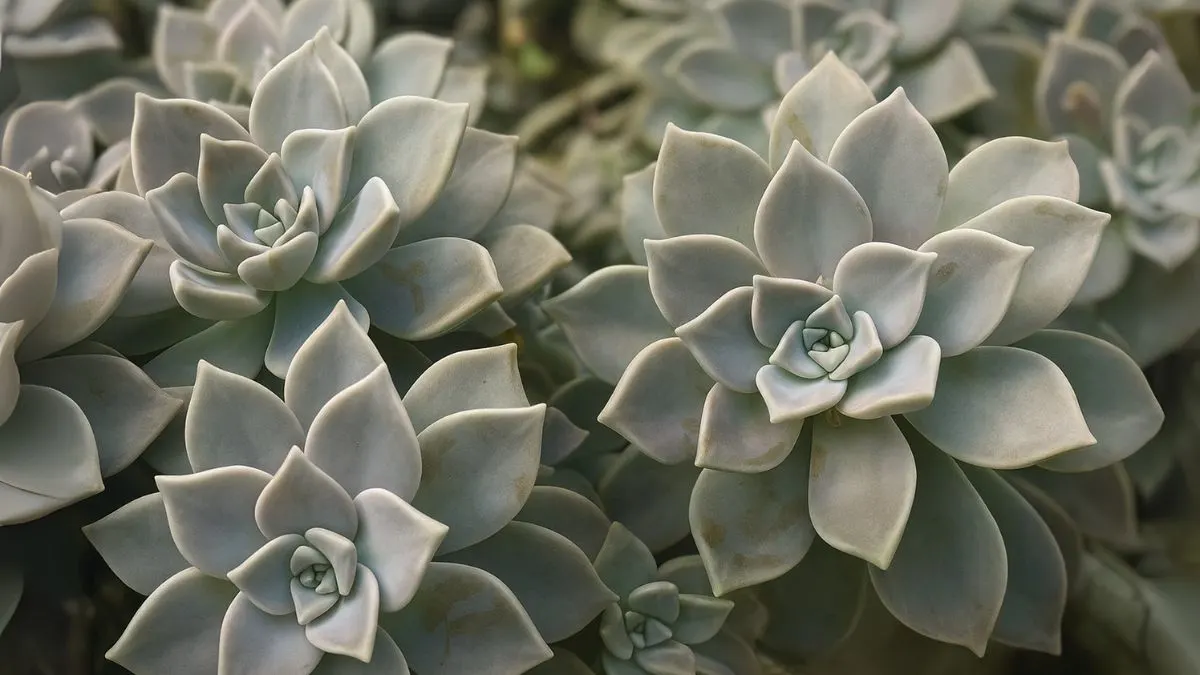Succulents have taken the gardening world by storm, and among them, the ghost plants holds a special place. With its pastel-hued rosettes and powdery leaves, it feels both mysterious and elegant—earning it the name that intrigues plant lovers everywhere.
As someone who has grown Graptopetalum succulents (also called ghost plants) on my balcony in humid monsoon conditions, I’ve seen how resilient and beautiful they can be. Despite neglect, it still flourished, proving why it’s truly a hardy stunner.
This blog will explore everything you need to know about the ghost plant—from care tips and varieties to why it’s considered one of the most captivating succulents for modern gardeners.
What Makes Ghost Plants Unique?

The ghost plant (Graptopetalum paraguayense) belongs to the Crassulaceae family. Its name comes from the silvery-grey coating on its fleshy leaves, which gives it a ghost-like appearance.
The plant is a captivating succulent that has become popular among plant enthusiasts not only for its looks but also for its easy maintenance. With minimal effort, it rewards growers with stunning pastel tones that change depending on sunlight exposure.
Care Tips for Growing Ghost Plants
- Sunlight Needs
The most important rule: provide plenty of direct sunlight to maintain compact growth and rich colors. If grown indoors, place it near a sunny window. Outdoors, it thrives under full sun. Interestingly, ghost plants thrive in bright but indirect sunlight too, especially during hot summers when direct rays can scorch the leaves.
- Soil and Watering
Succulents are notorious for disliking too much water, and ghost plants are no exception. Always use well-draining soil, and water only when the soil is completely dry. Overwatering causes root rot. Remember: favor well-drained soil and dislike too much water is the golden rule.
When watering, give the ghost plant scant water and always water at the soil level. Avoid splashing the leaves, as this can leave spots and damage its powdery coating.
Also Read: Stachys Plant: Nature’s Soft Bandage With Healing Powers
- Growth Environment
Ghost plants thrive in well-draining soil and consistent sunlight. They’re drought-tolerant, making them ideal for xeriscaping or container gardening in regions like Canada or the USA where climates vary.
Here’s a quick care summary:
Factor |
Ghost Plant Requirement |
Light |
Full sun or bright indirect sunlight |
Soil |
Sandy, well-draining soil |
Watering |
Only when soil is dry, water at soil level |
Hardiness |
Hardy stunner; drought-tolerant |
Varieties of Ghost Plants
While the classic Graptopetalum succulents (also called ghost plants) are most famous, gardeners often confuse them with similar varieties.
- Classic Ghost Plant – Recognized by its pastel grey rosettes that blush pink under stress.
- Hybrid Graptopetalums – Some hybrids resemble echeveria or sedum but carry the same hardy, drought-tolerant nature.
- Trailing Ghost Plants – Perfect for hanging baskets; they cascade elegantly over edges.
Each variety shares the same need: well-drained soil, plenty of sunlight, and minimal water.
Why Ghost Plants Are Called Hardy Stunners
Among all succulents, the ghost plant is known as a hardy stunner because it tolerates neglect. Forgot to water it for weeks? It still survives. Placed in poor soil? It adjusts.
This resilience makes it a favorite in Canada, the USA, and worldwide, where beginner gardeners seek low-maintenance plants that still deliver visual appeal.
Also Read: The Secret Behind Rajnigandha Fragrance: How to Grow It at Home
Benefits of Growing Ghost Plants
- Low Maintenance
Ghost plants are ideal for busy lifestyles. You don’t need to fuss over them—just follow the basics: scant water, direct sunlight, and well-draining soil.
- Decorative Versatility
They look stunning in rock gardens, containers, or as part of succulent arrangements. Their pastel tones complement vibrant succulents like echeveria or jade plants.
- Educational Value
Because ghost plants are succulents that thrive on resilience, they’re excellent teaching plants for children or beginner gardeners learning about watering schedules and soil health.
Personal Experience with Ghost Plants
When I first brought home a ghost plant, I placed it on a sunny windowsill. Within weeks, the rosette turned pinkish, almost glowing in the afternoon light. That transformation showed me why enthusiasts say: “Your ghost plant reflects the care you give.”
Even when I moved it outdoors, its compact form stayed intact because I remembered to provide plenty of direct sunlight to maintain compact growth and rich colors.
Conclusion
The ghost plant is more than just a pretty succulent—it’s a symbol of resilience and natural artistry. Whether you’re drawn to its powdery-grey rosettes or its ability to survive neglect, this plant proves why it’s a captivating succulent that has become popular among plant enthusiasts.
With minimal effort, your ghost plant will reward you with year-round charm. If you’re looking to expand your succulent collection, start here—it’s truly a hardy stunner.






